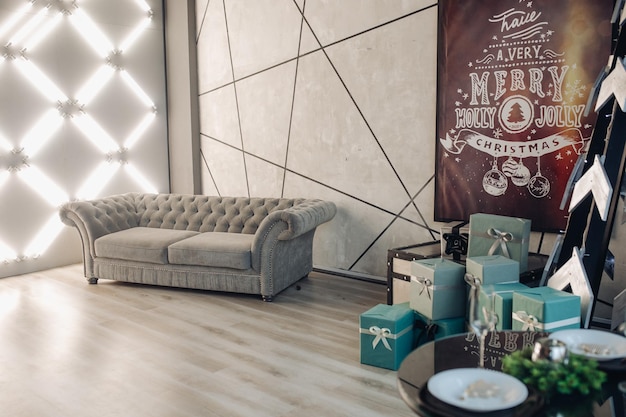The living room serves as the heart of the home, a space where families gather, guests are entertained, and cherished memories are made. When it comes to designing this central hub of activity, prioritizing comfort is paramount. In this blog post, we delve into the significance of placing comfort at the forefront of living room design, exploring how it enhances the functionality, ambiance, and overall enjoyment of the space.
Creating an Inviting Atmosphere:

Comfortable living room design starts with creating an inviting atmosphere that welcomes occupants and encourages relaxation. Soft lighting, warm color palettes, and plush furnishings contribute to a cosy and inviting ambiance that invites people to unwind and linger in the space. By prioritizing comfort in the design process, you can cultivate a welcoming environment where family members and guests feel at ease and eager to spend time together.
Enhancing Relaxation and Well-Being:

The living room should serve as a sanctuary for relaxation and well-being, providing occupants with a comfortable retreat from the stresses of daily life. Comfortable seating options such as sofas, armchairs, and recliners offer a place to unwind and decompress after a long day. Incorporating soft textiles, such as cushions, throws, and area rugs, adds layers of comfort and warmth, creating a cocoon-like environment that promotes relaxation and rejuvenation.
Supporting Social Interaction and Connection:
Comfortable living room design facilitates social interaction and connection among family members and guests. Ample seating arrangements, arranged in conversational groupings, encourage face-to-face interaction and meaningful conversation. Comfortable seating options that cater to different preferences and postures, such as lounge chairs, ottomans, and sectional sofas, ensure that everyone can find a cozy spot to relax and engage with others comfortably.
Maximising Functionality and Versatility:

Comfortable living room design goes hand in hand with maximizing functionality and versatility in the space. Modular furniture arrangements, flexible seating options, and multifunctional furnishings allow the living room to adapt to various activities and occasions seamlessly. Whether it's hosting a movie night with family, entertaining guests for a dinner party, or enjoying a quiet evening with a book, a well-designed living room offers comfort and versatility to accommodate diverse needs and preferences.
Promoting Ergonomic Design and Posture Support:
Comfortable living room design prioritises ergonomic principles and posture support to ensure the health and well-being of occupants. Ergonomically designed seating options, such as chairs with lumbar support and adjustable reclining features, promote proper posture and reduce the risk of discomfort or fatigue during prolonged sitting. Incorporating ergonomic considerations into the design process helps create a comfortable and supportive environment that promotes physical health and enhances overall comfort for users of all ages.
Incorporating Personalized Touches and Preferences:

Comfortable living room design allows for personalized touches and preferences that reflect the unique lifestyle and tastes of occupants. From selecting furniture styles and fabrics to incorporating personal mementos and decorative accents, customization plays a key role in creating a space that feels truly inviting and comfortable. By infusing the living room with elements that resonate with individual preferences and interests, you can elevate comfort to a deeply personal level, creating a space that feels like home.
Balancing Aesthetics with Functionality:
Comfortable living room design strikes a balance between aesthetics and functionality, ensuring that the space looks as good as it feels. While aesthetics play a crucial role in creating an inviting and visually appealing environment, functionality remains paramount in delivering comfort and usability. Choosing furniture pieces that marry form with function, such as stylish yet comfortable sofas and chairs, allows you to achieve the perfect balance between design aesthetics and comfort, creating a harmonious and well-rounded living room space.
Temperature Control and Climate Considerations:
Comfortable living room design takes into account temperature control and climate considerations to ensure that the space remains cozy and pleasant year-round. Proper insulation, efficient heating, and cooling systems, as well as adequate ventilation, contribute to maintaining optimal indoor comfort levels regardless of external weather conditions. Additionally, incorporating features such as ceiling fans, window treatments, and strategic placement of furniture can help regulate airflow and temperature distribution, enhancing overall comfort and usability of the living room space.
Noise Reduction and Acoustic Comfort:

Comfortable living room design addresses noise reduction and acoustic comfort to create a serene and tranquil environment conducive to relaxation and conversation. Sound-absorbing materials, such as upholstered furniture, area rugs, and acoustic panels, help minimize unwanted noise and echoes, creating a quieter and more peaceful atmosphere. By mitigating noise distractions and enhancing acoustic comfort, comfortable living room design promotes a sense of calm and well-being, allowing occupants to enjoy quiet moments of solitude or engage in meaningful conversations without disruption.
Accessibility and Inclusivity:
Comfortable living room design prioritises accessibility and inclusivity to ensure that the space is welcoming and accommodating to users of all ages, abilities, and mobility levels. Incorporating universal design principles, such as wide doorways, barrier-free pathways, and adjustable furniture, promotes ease of access and navigation for everyone, including older adults, children, and individuals with mobility challenges. By creating a living room environment that is inclusive and accessible to all, comfortable living room design fosters a sense of belonging and ensures that every occupant can fully enjoy and participate in the activities and experiences offered in the space.
Conclusion:
In conclusion, prioritizing comfort is essential in living room design, as it enhances the functionality, ambiance, and overall enjoyment of the space. By creating an inviting atmosphere, promoting relaxation and well-being, and supporting social interaction and connection, comfortable living room design fosters a sense of warmth, welcome, and belonging for occupants. From maximizing functionality and versatility to promoting ergonomic design and incorporating personalized touches, prioritizing comfort ensures that the living room serves as a comfortable and inviting sanctuary for relaxation, socializing, and making lasting memories with loved ones.
